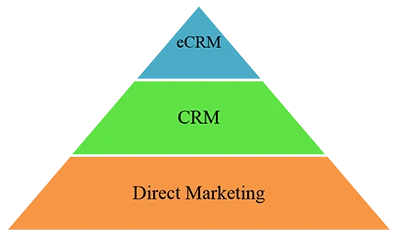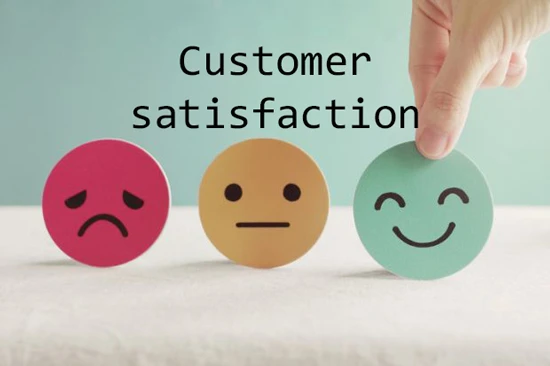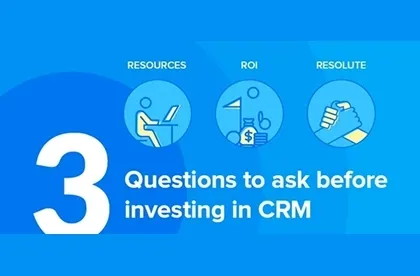With the increasing competition among producers, the expanding market for products and services, and advancements in science and technology, an opportunity arises for trade and marketing experts to leverage telecommunications and communication facilities. By satisfying current and potential customers, they can create an ideal situation for the organization.
This means improving marketing and sales management, presenting some very complex challenges:
- Reaching the target market with more appropriate messages
- Reducing the time and resources required for sales
- Improving the marketing team's understanding of the information needed for each target market
- Improving the sales team's understanding of individual needs, perspectives, and decision-making criteria
One of the important tools that can be very helpful in this regard is the use of telecommunications and internet tools. The development of information and communication technology, e-commerce, website development, etc., has impacted management and marketing, as seen in the increasing trend of companies towards direct marketing.
Customer satisfaction is the main result of marketing activities, acting as a link between the different stages of consumer buying behavior. For example, if customers are satisfied with a particular service, they are more likely to repeat their purchase. Satisfied customers are also likely to talk to others about their experiences, resulting in positive word-of-mouth advertising. Conversely, dissatisfied customers are likely to sever ties with the company and engage in negative word-of-mouth advertising. Furthermore, behaviors such as repeat purchases and word-of-mouth advertising directly affect a company's survival and profitability (Naser & Jamal, 2002).
Writings on the relationships between customer satisfaction, customer preference, and profitability indicate that customer satisfaction affects customer preference, which in turn affects profitability. Proponents of this theory include researchers such as Anderson and Fornell (1994), Gamson (1993), Skelt et al. (1995), Schneider and Bowen (1995), Storbacka et al. (1994), and Zeithaml et al. (1990). These researchers explain the relationship between satisfaction, preference, and profitability. Statistical analyses resulting from these relationships were introduced by Nelson et al. (1992), who examined the relationship between customer satisfaction and profitability in hospitals, and Rust and Zahorik (1991), who examined the relationship between customer satisfaction and customer retention in the retail banking system.
Blanchard and Galloway believe: “Customer satisfaction is the result of a customer's perception during a transaction or valuable relationship, where value equals the ratio of service quality performed to the customer's price and costs.” (Halwool, 1996)
The definition of customer satisfaction accepted by many experts is: Customer satisfaction is a result obtained from comparing the customer's pre-purchase expectation of performance with the actual perceived performance and the cost paid. (Brill et al., 2004)
In this regard, and in order to connect with customers, marketing has shifted from mass marketing to personalized and direct marketing (Direct Marketing & One to One Marketing).
Direct marketing is one of the five components of promotional tools that, along with advertising, sales promotion, public relations, and personal selling, is used to communicate with target audiences. Numerous companies and organizations, from the smallest retailers and civil and charitable organizations to the largest international companies, use direct marketing to promote their products and services.
Research shows that the cost of acquiring new customers is five times the cost of retaining existing customers. Companies have found that losing a customer is more than just losing a sale; it means losing the entire stream of purchases that the customer could have made throughout their lifetime or during their period as a customer (Kotler, 1999).
Today, many companies spend large sums of money to build relationships with their customers. Customer Relationship Management (CRM), one-to-one marketing, and increasing communication are some of the strategies companies use to attract and retain customers.
Effective customer relationship management (CRM) has become an essential strategy for companies in almost every business sector.
Companies are striving to get closer to their customers and find ways to create value for them, seeking to view customer relationships as a solution and a replacement for the demand-sales relationship with cooperation. (El-Sawy & Bowles, 1997).
Organizations will be more successful if they focus on gaining and maintaining each customer's share rather than market share (Pepper & Rogers, 1995).
It has been shown in practice that retaining an existing customer is more profitable than acquiring a new one (Reichheld & Sasser, 1990).
Now is the time to unite marketing and sales teams through a single tool and technique, combining sales and marketing into a larger, more efficient team.
This goal for managing customer behavior involves fully tracking customer interactions and prospects:
- Every marketing transaction
- Every sales transaction
- Every service transaction
Only by fully tracking all these aspects will the process work correctly and lead to sales.
To clarify, the relationships between the different types can be depicted as follows:

This means that Direct Marketing is a broad concept that encompasses CRM and is one of its components. Similarly, CRM includes classic CRM and eCRM, with this project focusing more on eCRM.




